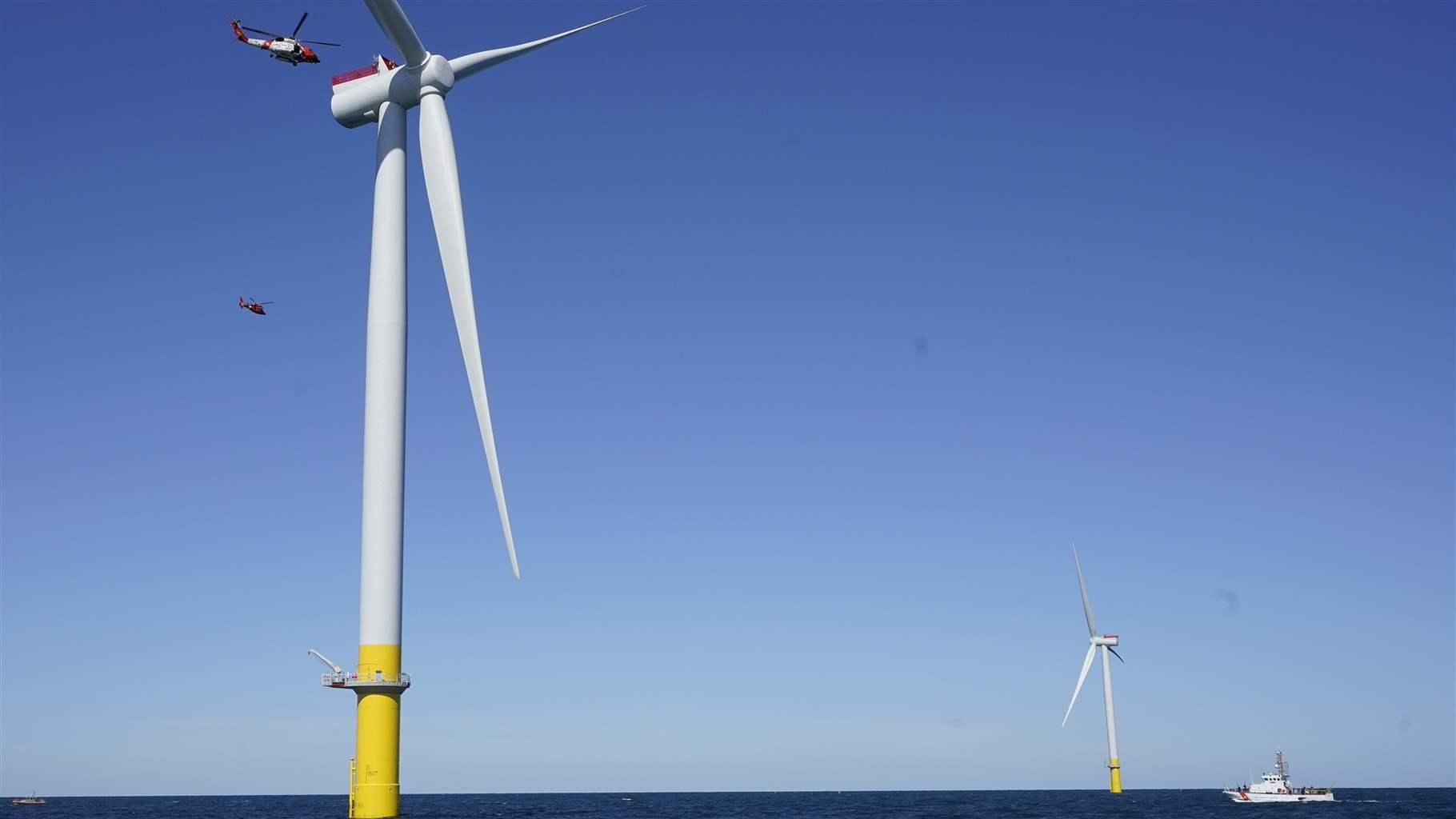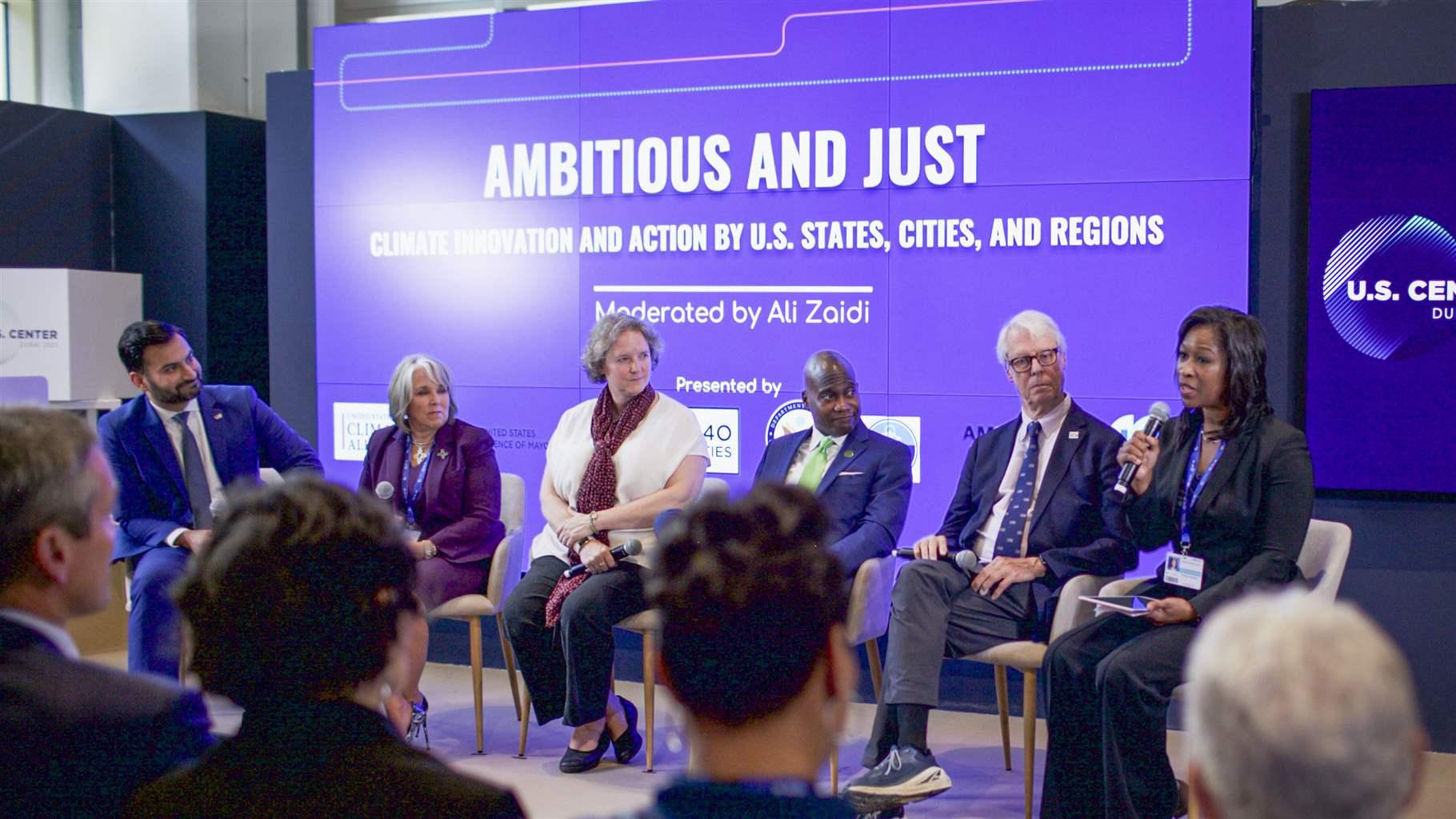At COP28 Climate Summit, Local Leaders Take Center Stage
In a first at global meeting, U.S. state and local officials advance clean energy and nature-based solutions

As world leaders gather in Dubai for the 28th annual Conference of the Parties (COP28) to address climate change, subnational governments are playing an increasingly important role in addressing this urgent global challenge. To elevate these state and local voices, COP28 featured the first Local Climate Action Summit, a two-day gathering focused on climate solutions offered by governors, mayors, and local elected officials from around the world.
Encouragingly, the summit showed that many subnational leaders are aligning their financial, technical, and policy solutions in support of national climate efforts. Recent subnational success in the United States was a focus. Here are three areas of advancement and opportunity that were discussed:
Investing in clean energy
With the decline in costs of renewable technologies such as solar and wind power, states and localities in the U.S. and abroad are embracing renewable energy and its benefits for energy security, resource diversification, and public health. According to the U.S. Energy Information Administration, solar and wind capacity has grown by over 200% across the U.S. since January 2015. Wind energy capacity grew by 6% across the country from 2021 through 2022, and Texas and North Carolina led all states in solar power generation.
During the summit, subnational policymakers—including New Mexico Governor Michelle Lujan Grisham and Andrew Ginther, mayor of Columbus, Ohio—discussed strategies and lessons learned that states, regions, and localities around the world have implemented to help achieve national goals, including deploying clean energy sources such as offshore wind.
Summit speakers also highlighted the projected economic growth from government investment in clean energy jobs and infrastructure. John Podesta, the senior adviser to the president for clean energy, noted that more than 210,000 jobs were created as a result of the Inflation Reduction Act, which allocated $369 billion for clean energy. In large part, this is due to enhanced coordination and alignment between national and subnational leaders working to leverage clean energy opportunities. Gov. Lujan Grisham noted the high potential to expand the clean energy workforce in New Mexico and said the state has dedicated $40 million to that effort. She also affirmed the goal of a just transition to a clean energy economy, that is, one involving communities, Tribes, and other rightsholders from all levels of the state’s socio-economic range.
Electrifying transportation
Around the world, automakers and consumers are turning to electric vehicles (EVs) as a way to reduce carbon emissions and other harmful pollutants. In the U.S., states are seeing increased adoption of electric vehicles, major investments in EV manufacturing, and the build-out of charging infrastructure. In fact, states have received $885 million in federal funding to install charging stations every 50 miles on major highway corridors, and many states have begun construction of the stations. Maryland Secretary of the Environment Serena McIlwain announced the upcoming launch of the state’s Climate Action Plan. The plan will outline a strategy to meet the state’s emissions reduction goals, including targeting the transportation sector, Maryland’s largest source of emissions.
At the summit, decision-makers underscored the economic and health benefits of electrifying transportation. In the U.S., they can do so through policy and planning tools that best leverage federal and state funding to help states accelerate their transition to cleaner options.
Working with nature
Summit attendees also discussed the role that nature can play in storing carbon dioxide and in helping people and ecosystems adapt and build resilience to climate change. By restoring and protecting coastal wetlands, for example, governments can move closer to their climate goals—including the effort to safeguard 30% of the world’s land and waters by 2030.
California Natural Resources Secretary Wade Crowfoot highlighted the state’s ambitious targets for emissions reductions, including use of nature-based solutions that can sequester and store sufficient amounts of greenhouse gases to help California achieve its goal of climate neutrality. And Errick Simmons, mayor of Greenville, Mississippi, announced a new target to protect 100,000 acres of wetlands along the Mississippi River. This would equate to sequestering over 230,000 tons of carbon in the near term.
However, despite the value of nature-based solutions, governments must primarily focus on reducing greenhouse gas emissions if they hope to stave off catastrophic warming.
The summit emphasized the integral role that subnational efforts across the globe play in implementing climate action—and the U.S. is no exception. With increasing pressure on world leaders to make meaningful progress on climate change, it’s encouraging to see such strong action from state and local governments. The inaugural Local Climate Action Summit at COP28 is one more indication that all levels of government must work together to help countries reach their climate ambitions.
Brian Watts is a principal associate and Courtney Durham Shane is a senior officer with Pew’s energy modernization project.














